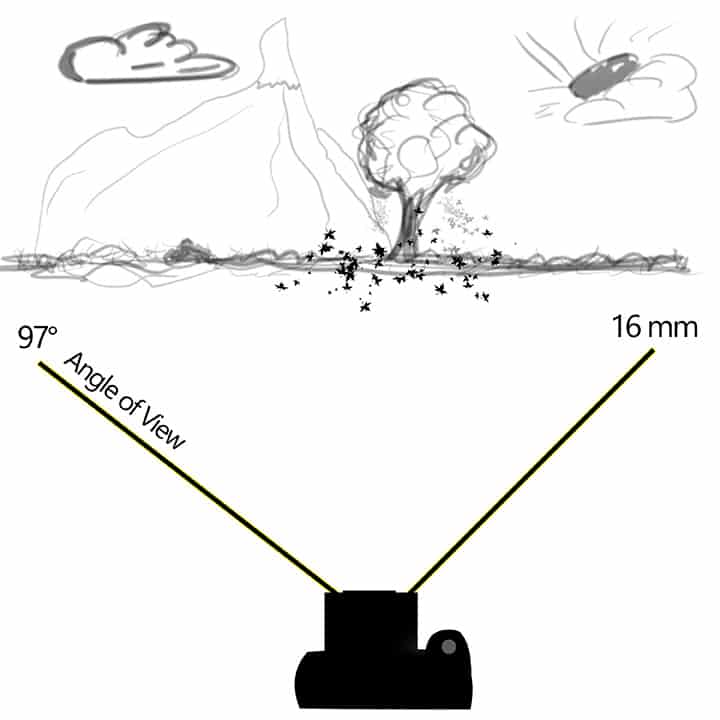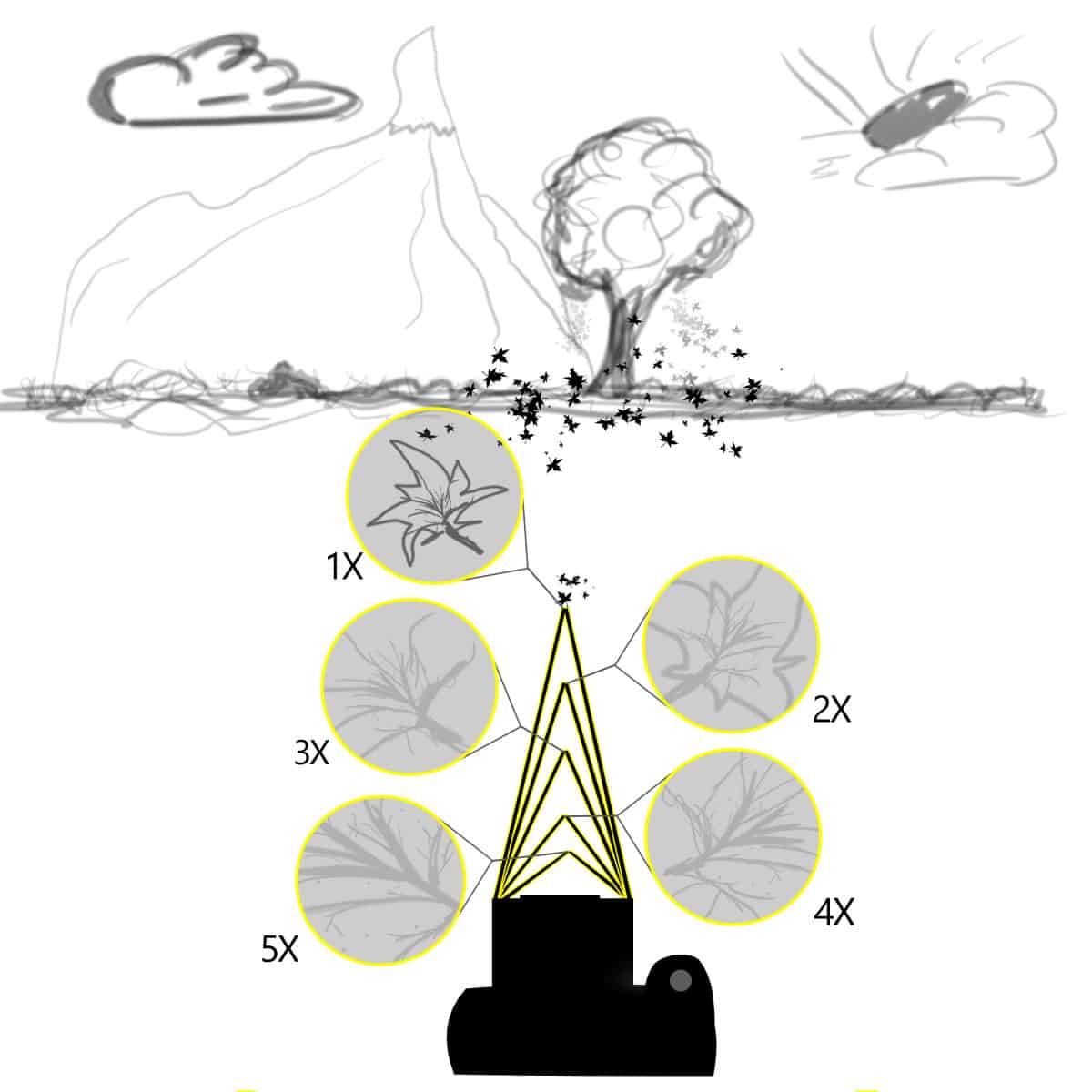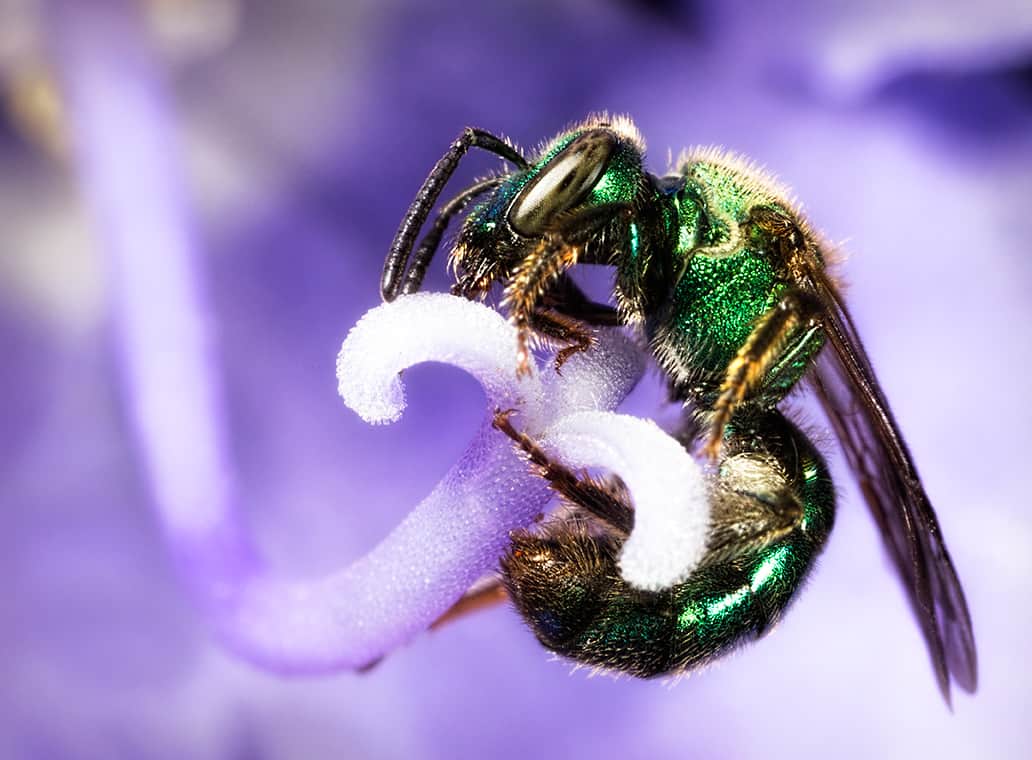Spring is here, bring on the bugs… and flowers!
I have this crazy obsession with Wide Angle HDR photography, but what you may not know is that I enjoy a bit of macro from time to time. I usually bust out ye old Macro lens when the bugs start creeping around the basement after the Winter chill. There is something calming and peaceful about taking something very small and filling the entire frame with it. Or taking a macro shot of something we just walk past on a daily basis not knowing that there is an entire world of stuff going on with the simplest of things, like a dandelion or a bee.
I started Macro photography years ago with my old Olympus E-30 and 50mm macro lens with an extension tube. This setup was about a 1:1 macro ratio, meaning if the object were about 35mm in real life it would fill an entire 35mm frame (or FF sensor). What this setup really did is start an addiction I just can’t get enough of. Last year I brought the Canon MP-E 65mm lens into my lens family and it has been a welcomed addition ever since! It allows for magnification ratios from 1:1 to 5:1 . That means you can make anything up to 5 times life size!
To show you a visual of how this works, here is a depiction of a 16mm lenses angle of view. It is about 97° from the front lens element. This allows for an entire scene to be caught in the frame. It would look something like this:

The difference with the Canon 65mm MP-E is that it cannot capture an entire sweeping scene. As a matter of fact it will not photograph anything unless it is at least 4 inches from the front lens element. The angle of view is essentially reversed and more like a microscope than a traditional lens. The 16mm Wide angle lens above captures the entire scene, while the 65mm MP-E is more for capturing smaller elements within the scene… much smaller elements! It looks something like this:

As you can see at the 1:1 ratio, or 1 times life size, the Canon MP-E would only be effective to capture the leaf in this scene. As you increase the magnification you must get closer to the object. At 1:1 you are about 4 inches from the subject at 5:1 you are around 1.6 inches from the subject. Some people don’t like being that close to a wolf spider, but I find it comforting in a weird way.
It is at 5:1 that I find life, in all aspects, incredibly beautiful.
4 Reasons Why I love Macro Photography
1. I can see things I have never seen before.
Macro photography opens up a whole new world of exploration with my camera. I capture glimpses of things not many people capture, especially at 5:1 magnification. I developed a love for Macro with Charlotte, the spider that was outside of my Wife’s and my old apartment. She let me photograph her as she spun her web, perfected her home, and devoured her dinner. I was awe-struck that I could capture a spider spinning a web!

2. It taps into my philosophical thoughts.
The other day I was outside with my sons playing in the yard and I saw a dandelion. I decided to get the macro setup and take some shots of it at varying magnifications. What I saw at 5:1 blew me away. Here my whole life I have been labeling this flower as a weed, a disgusting weed that should be brutally killed with chemicals to make my yard “pretty”. Taking a closer look I found more beauty in that Dandelion than any blade of grass I was trying to “protect”.
Then I thought to myself. We do this to people too. We label them, mistreat them, and sometimes slaughter them for what we have labelled them and we may never take the time to see them on their surface for who they are and what beauty they have to show us. They could be as beautiful as this dandelion, yet we treat them with the same harsh “chemicals” because of a silly label. If someone 200 years ago labelled a dandelion as beautiful maybe we’d be potting them instead of poisoning them.

3. Macro Photography makes me feel like a scientist.
I think more than any other form of photography, Macro photography brings out my inner scientist. The inner childlike scientist comes out anytime I am at 5:1 magnification on anything. There is beauty abound in this world; shapes, patterns, colors, but they are hidden to our naked eye. As a child I always thought snow flake crafts were cut that way to be “cute”, but recently I have seen them in a whole new light. They are all unique, they have varying shapes and sizes. Many of them are not white like we imagine in our head, they are clear when they fall, translucent in nature and reflect light in the most beautiful ways.

4. Macro Photography puts my life in perspective.
The first day I went out with the Canon 65mm MP-E my sons and I went out hiking in a forest trail. I felt silly carrying this giant gun looking macro setup around, but I needed to see what I was missing in the world. I took a lot of horrible pictures that day, because it is a tough setup to get used to. The Canon 65 MP-E must have a flash attached to it or you will rarely get a good picture. We got to a point where, Michael my 3 year old, wanted to turn around. Just as we turned around I saw a bee no bigger than my pinky nail flying around a flower. I stopped there and got one of the best macro shots I think I will ever take.
I noticed this bee going about its life, flying from one flower to the next. It didn’t have an iPad in its hand nor a Bluetooth attached to its head. It was truly living disconnected from what we know as the world and just doing what it does best. This bee was living it’s life to the fullest, taking care of the queen, pollinating the flowers, and doing it so gracefully. I am not sure about the life expectancy of this little guy, but that didn’t matter to him, he was living it to the fullest!










I appreciate your thought about the bee. I have really been trying with varying degrees of success to live like you suppose the bee is. Doing what he is made to do and making the world a better place. All the while he is just in the moment. Buddhist thought calls this Mindfulness. I am happiest when I remember this.
Great piece and great observation.
Thanks Rolly. It is hard to remember why we are here sometimes when it is so easy to get caught up in things that take us away from our purpose.
You put into words all the reasons that I enjoy macro photography. I can spend 15+ minutes watching a spider as it waits patiently for a fly or bee to get within its grasp. I get to witness in detail the life and death struggles that are an intrinsic part of nature. And, I too find beauty in weeds. The ordinary becomes extraordinary through a macro lens.
It is fascinating isn’t it?
I did very much the same thing with Charlotte, I watched her spin her web and when she caught that dinner, it was AMAZING! I was photographing “her” making the web and out of no where she came darting down the web on a strand of silk toward my lens. I jumped back and waited, I saw her move back up the silk and then started shooting her again. I didn’t even notice that she was swooping down to catch a gnat out of thin air. That is what she was munching on. It was devoured in less than 2 seconds I only had time to take 2 photos of the occasion. It was amazing and I will never forget that.
Hey, ole buddy!
My first love was, and still is, wildlife photography. Due to the frustration of never having a lens that was “long enough”, I next rambled into HDR, where I met you. OK, wildlife is kicking my tail, HDR isn’t any easier, so let me get into butterflies. Four years later, after building several butterfly gardens to attract the little beauties, I found that they, too, have put the Ninja on me. Hmmm….let me try a little macro. See a pattern developing, here?:)
I expressed my frustrations over never achieving critically perfect imagery some time back to an old friend, I think it was a guy named “Blake”, and he came back to me with a comment that I’ve thought about, a lot….
“We see the details but our viewers see the message. The details are less important when the subject matter moves them. We need to remember that!”
Thanks for the cool macro imagery, the thoughtful, philosophical approach, and the….message. Rock on, my friend!….Mitch
That is an awesome quote, your friend Blake seems pretty wise! I will have to remember that one!
Seems our journeys are intertwined!
Darn it Blake, now you’ve got me all psyched up to do some Macro photography. But hey, it’s not like I wasn’t going to walk around with my camera anyway. Only now I’ll probably need to lug my flash and a tripod. So, I guess I’ll owe you a big thank you, because carrying that extra stuff around will be like ‘bonus’ exercise. LOL. I really enjoyed the article.
haha! isn’t that the truth! I do a no tripod form of Macro, it makes it so much easier and I can get in some really tight places.
Enjoyed the article which echoes many of my feelings about machro photography.
Love this entire post, I too love nature and macro photography but I have to tell you Blake the bit on the dandelion moved me and touched my heart. Thank you!
Loved the macro article. I was a terrible phoyographer before I invested in a cannon 100mm lens ansd a tripod. It was love at first sight. While I can’t get as close as you can with your gear, what I see gives me great joy. I love seeing the world close up.
I often do flowers back lit with a reflector to lighten the center. It gives them a special look.
I am very happy to see that you like it too. I am trying to incorporate your HDR color mapping ideas to give the flowers a new look.
Awesome! I love how you are applying the techniques you are learning to Macro also, that is great!
The 100mm Macro is one of the next on my list. The MP-E 65 is great but you have to get dangerously close to things, its like a microscope.
I just want to say I love your blogs on macro. I have a canon EF-S 60mm 1:2.8 macro lens I don’t have any problem with it, but is there one better. I also have a flash ring which helps. I also like the focus stacking method. So much to learn even just normal photography I’m just a beginner and learning many new things ever day So I want to thank you for all your get videos and blogs.